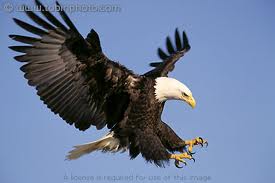
Kyra Maya Phillips on how pirates, hackers and gangsters can teach us to be more creative and successful in business
by Leonora Oppenheim in Culture on 30 September 2013

Kyra Maya Phillips, the co-author of the upcoming book “The Misfit Economy,” encourages readers to think like pirates, gangsters and hackers when approaching business. While researching and writing the book, Phillips spent a couple of years delving into the darker side of innovation; setting out to uncover the often nefarious operating methods of society’s outcasts. Phillips and her co-author Alexa Clay wanted to know what underground and black market cultures might be able to teach those of us who stick to the more conventionally straight and narrow.
The result of their “Misfit Economy” quest has taken shape in the form of three very different characters, whose particular attributes might be synthesized to create new perspectives in business. At The Conference in Malmö, Sweden, last month, Phillips introduced attendees to the pirate, the hacker and the gangster as archetypes whose individual codes of conduct have made valuable contributions to the process of innovation.


Phillips declares she is most taken with the romantic vision of the 18th century pirate—not so much for their dastardly swashbuckling ways, but more for the way they embraced their dark past as miserably treated merchant sailors, in order to create something better for themselves in the form of the Pirate's Code. This code of conduct was the 18th century version of viral communication, coming into widespread use across the oceans. The Pirate Code contained rules such as equal votes for all, equal sharing of food and drink and, most importantly, equal sharing of treasure. This made for a more equitable life on board ships than they had previously experienced, therefore ensuring a committed workforce.

Following the pirate is the modern day hacker. Phillips describes hackers as people who have “an itch to fix and improve things.” And to solve anything, Phillips says, “You need to become one with the problem.” Hackers are often detail-oriented to the point of obsession, while also being able to see the big picture. To improve something hackers must first understand how it works—and to understand something fully, they take the system apart before putting it back together again.
In the third archetype, the key attribute of the gangster is primarily one of resourcefulness—of making the most of any given situation. This was outlined in a story Phillips told about a conversation she had with an ex-criminal, during which he described how many weapons he could make out of all the everyday objects around the room they were seated in—should he need to. Unnerving, perhaps; fascinating, definitely. There is even a book on this subject called “Prisoners' Inventions.”

Beneath the fun lies a profound message in Phillips’ approach. She summarizes her argument by bringing these misfits into the context of her own life: How the pirate had inspired her to look at her own dark side, how the hacker had inspired her improve her life by taking herself apart in an analytical process, and that the gangster had shown her how she could make the most of what she already had.
The pirate, and the dark side, seem to be particularly important. Phillips—like many, many of others—battles with the demon of depression, but through getting to know these misfits she has been able to explore and make friends with her dark side. As she says, “It is the least expected people who become our greatest teachers. Notice how the pirates became friends with their darkness. We must befriend what came before, even if it makes us confront painful and difficult things. We must confront our refusal to look at the misfit within ourselves. Pay attention to your dark side. Marvel at it and explore it.”
The “Misfit Economy” is due to be published by Simon & Schuster in 2014. In the meantime, here are three books on misfits that Kyra Maya Phillips recommends:
“The Invisible Hook” by Peter Leeson: A fantastic story about why 18th century pirates adopted democracy on their ships.
“Hackers” by Steven Levy: A fascinating history of hackers and the sub-culture they built.
“Gang Leader for a Day“: While controversial, this is a captivating story of an academic living with one of Chicago's deadliest gangs.
Lead photo by Leonora Oppenheim, illustrations by Tom Jennings



